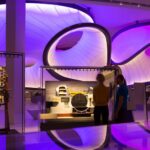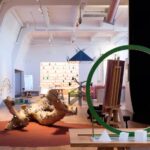
Brief and Strategy for the Upcoming Project – Initial Thoughts

This week we are looking into putting the first building blocks of the project, which are the project framework, timelines and work strategy. I looked into the lecture resources over the weekend, although this time round I am still at sea. The book Creating The Perfect Design Brief by Peter Philips is definitely coming handy this coming week. The issue that I am coming across is because I do not know what direction I should take as a designer. The brief I went with is helping the Science Museum create a more engaging platform for their archives (read more here).
From the Initial Research…
I need to delve into some proper reading in the coming days, however so far, I want to share my thoughts on this week’s lecture resources for this week, especially for Philip’s book. The first point that although obvious, people still hope that it is not the case, is that there is no such thing as a perfect brief. And the reason is obvious. Even if there are certain steps that need to be taken and some sections that must be included, a project brief varies depending on the project. As opposed to a design brief being perfect, a design brief becomes perfect – perfect in such a way that it is detailed and all the necessary information is included, meaning that is a well-executed framework that one can refer to at different stages of the project.
Being confidential documents, a real-life example of a design brief is hard to come across, unless you have worked with an agency. In some cases, still one may not have the full design brief at hand – the full document will be split and each stakeholder gets the section that are relevant to him or her. From my experience, I was usually brief verbally then received a copy of what was discussed by email, rather than being given a formal document to leaf through. That being said, it still helped in learning how a project was executed from start to finish. I remember I used to work in a small agency, the communication lines were quite transparent, so I personally also handled invoices at times. Being a small agency, us designers were involved in most of the project meetings from the very beginning. This meant that we got to meet the clients, listen to their briefing and ask questions accordingly.
Thinking Ahead and Overcoming Obstacles
One of the sections in Philips’s book is dedicated solely to the pre-planning how to overcome obstacles people may come across. In his book, Philips stays that the worst obstacle are the ones that are not anticipated and are indeed the single most important reason why projects fail.
Visualising obstacles and potential setbacks is very important, as it improves overall performance in the process of executing the project as well as helps in thinking about possible solutions should any of the potential setbacks arise. Should the case be were you would need to seek external help, you can do this ahead of time too. That being said, when doing such an exercise, it is important to be honest with yourself and identify your strength and weaknesses. In addition, take tame in differentiating the personal obstacles from the environmental (or external) obstacles. A typical personal obstacle would be things like ‘the fear of failing’, ‘fear of speaking’, ‘not having enough time’ and the like. Essentially, such obstacles are ones that you have control over. However, environmental obstacles are obstacles that you may need to live with. They are obstacles that cannot be controlled. This could be the atmosphere at the design studio, an overbearing colleague… essentially it is something that you would have to learn to work along with it.
A note on Debriefing…
An interesting point that I have not come across before is that of ‘debriefing’. We speak a lot about ‘briefing’ and planning, but not so much about evaluation. A couple of weeks back, we had such as exercise where we had to evaluate our own work (check it out here and here), however it is something that many companies often overlook, including design companies. As evaluation of the project is as important as the project itself, and it is more effective if it is done as soon as the project ends, while the experience is still fresh. Reason behind this is to highlight successes and see if they can be replicated In further projects and also shed light on failures to prevent them or solve them in upcoming projects.
Onto This Week
I still have to cover a lot of reading material and try to digest all the information in a timely manner and progress onto working on the strategy for my upcoming project. I am looking forward to get to work on this, however I do not know from where to begin. Let’s see how this week unfolds….





